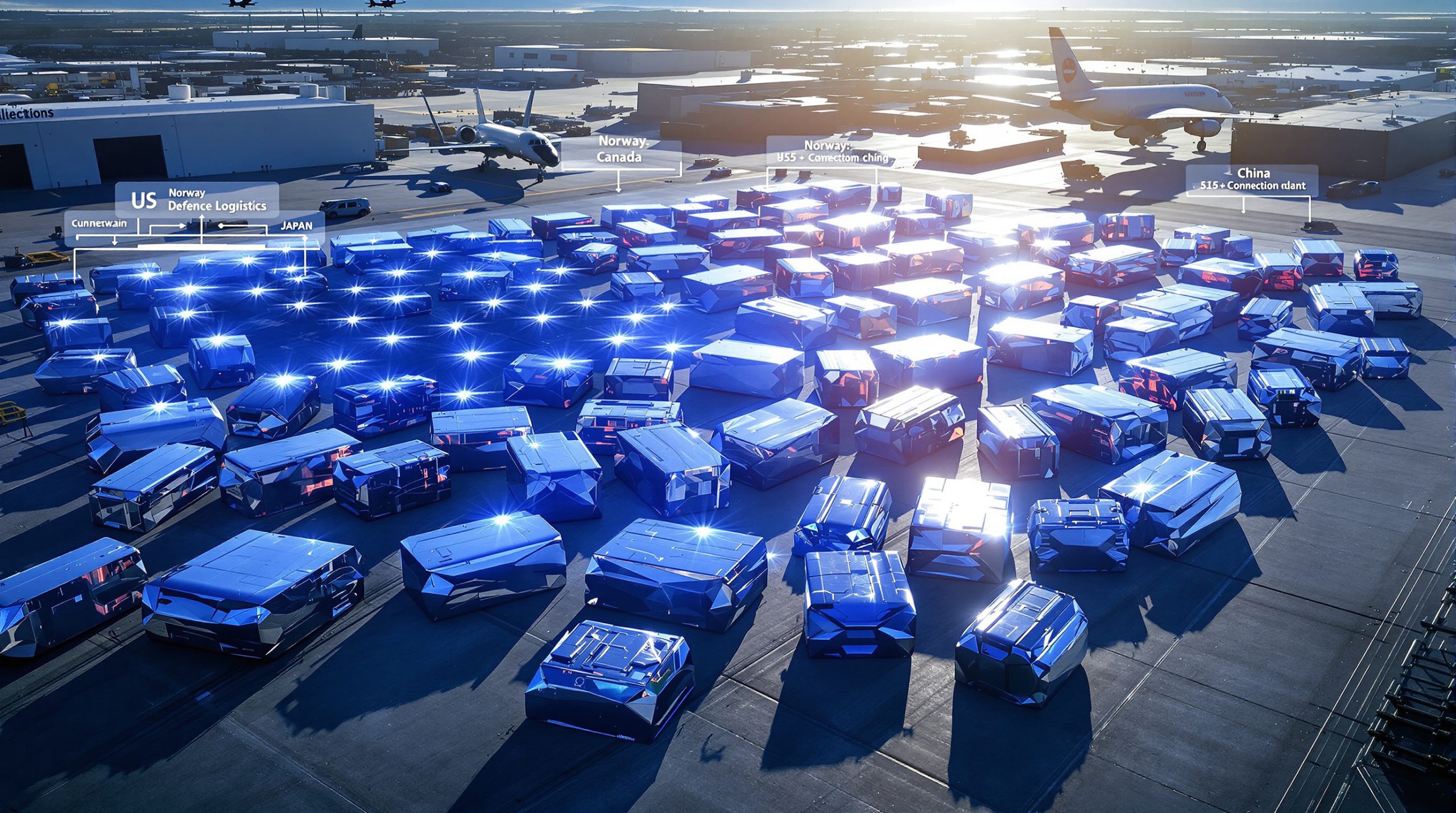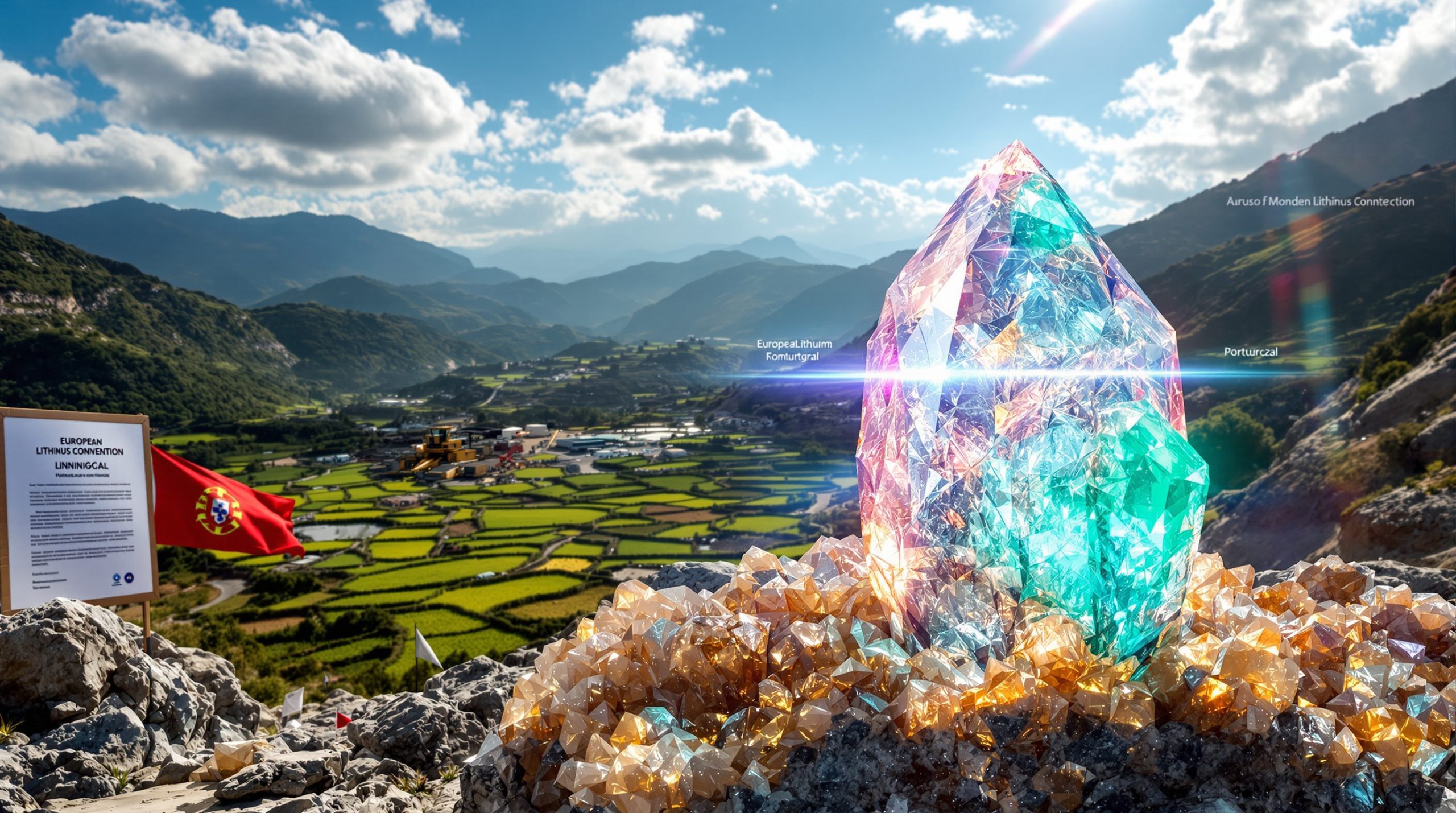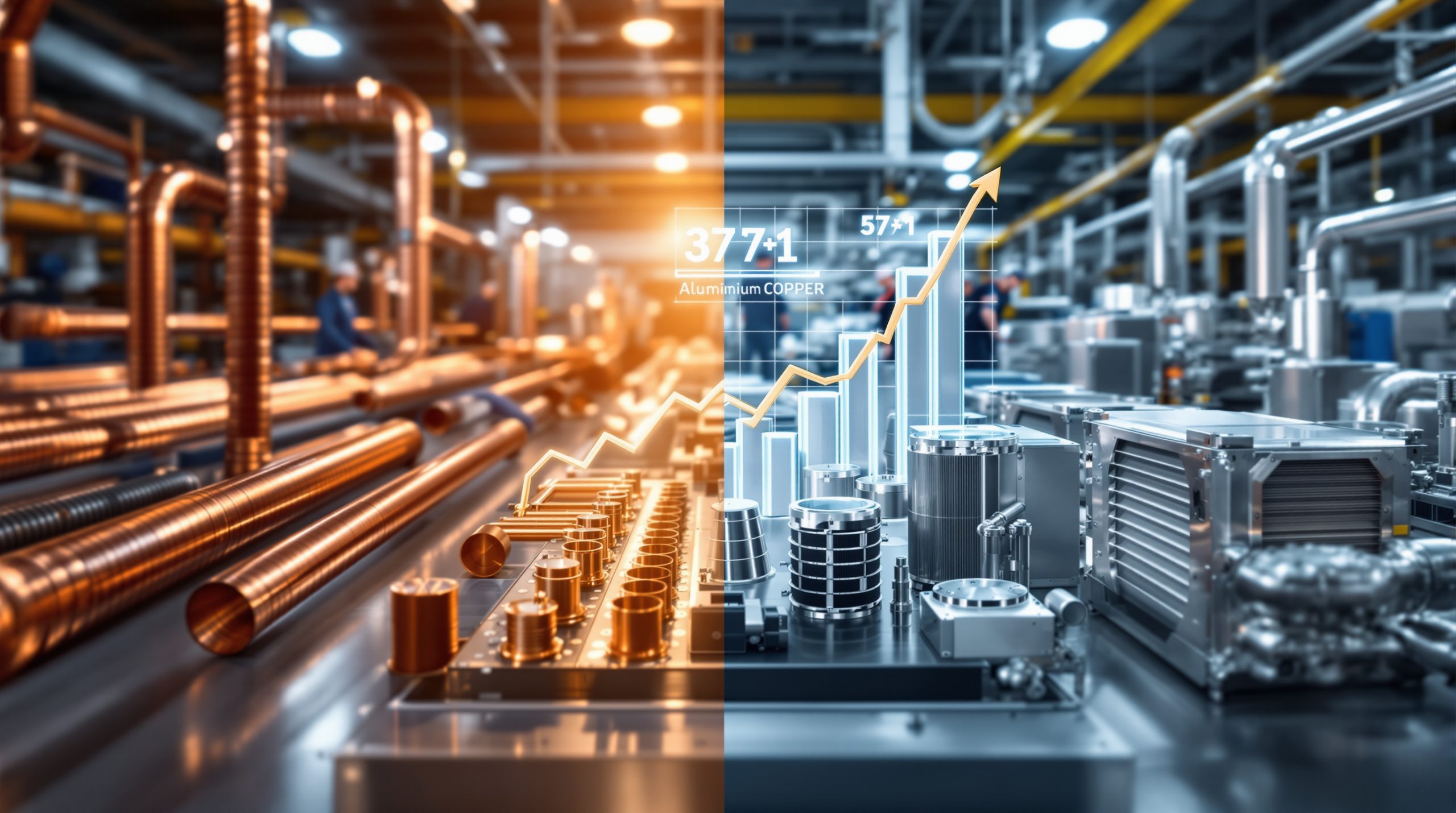Argentina's Strategic Mineral Resources: A Growing Global Power
Argentina is positioning itself as a key player in the global mining landscape thanks to its abundant reserves of strategic minerals. The South American nation hosts vast deposits of lithium, copper, gold, silver, and uranium, making it a priority destination for investments in the extractive sector. The recent update of the national mineral resource inventory reveals impressive figures that confirm its transformative potential for Argentina's economy.
The Strategic Value of Argentina's Mineral Resources
The global energy transition and growing demand for clean technology materials have put Argentina in the international spotlight. Its mineral resources not only represent a significant economic opportunity but also position the country as a key supplier of essential raw materials for global decarbonization efforts. The importance of critical minerals energy transition has amplified Argentina's relevance in international markets.
How Much Lithium Does Argentina Have and Where Is It Located?
Argentina's Lithium Reserves
Argentina possesses approximately 197.9 million tonnes of lithium resources and 18.6 million tonnes in proven reserves, representing about 20% of global resources and 13.3% of worldwide reserves. These figures position the country as the world's third-largest lithium producer, with potential to climb rankings in coming years.
According to data from Argentina's Ministry of Mining, the country produced approximately 70,000 tonnes of lithium carbonate in 2024, showing steady growth as new projects in Salta province joined existing operations in Jujuy and Catamarca.
Major Lithium Projects in Argentina
Argentina's lithium deposits are primarily concentrated in the Northwest region (NOA), encompassing the provinces of Catamarca, Salta, and Jujuy—part of South America's "Lithium Triangle." Among the most prominent projects are:
-
Cauchari-Olaroz: With 19.8 million tonnes in resources and 3.6 million in reserves, operated by Ganfeng/Rio Tinto.
-
Centenario-Ratones: Housing 12.5 million tonnes of resources and 1 million in reserves, developed by Eramet.
-
Olaroz: Contains 10.9 million tonnes in resources, managed by Rio Tinto.
-
Fénix: Operated by Rio Tinto, one of the most established productive projects.
-
Sal de Oro: Developed by POSCO, part of the new generation of lithium projects.
Other significant projects in various development stages include Sal de Vida, Tres Quebradas, and Pozuelos-Pastos Grandes, which will expand the country's production capacity in coming years.
Argentina's Lithium Production Forecast
Argentina's lithium industry has been gaining momentum, with production rising steadily since 2022. Industry analysts project that Argentina could become the world's second-largest producer in the medium term, with exports potentially exceeding $12 billion by 2030.
The country's strategic position within the South American "Lithium Triangle" (alongside Bolivia and Chile) gives it control over more than 85% of the world's lithium reserves, a critical advantage in the growing battery materials market. Recent Argentina lithium insights highlight the country's growing importance in global supply chains.
What Potential Does Argentina Have in Copper?
Argentina's Copper Reserves
Argentina holds 116 million tonnes of copper resources and 17.1 million tonnes in proven reserves. These figures represent approximately 7% of the global total, and together with Chile and Peru, the region concentrates 40% of global copper reserves.
Major Copper Projects in Argentina
The most relevant copper projects are primarily located in the provinces of San Juan and Salta:
-
El Pachón (San Juan): With 25.4 million tonnes of resources, developed by Glencore.
-
Josemaría (San Juan): Already under construction, with 4.6 million tonnes of resources and 3 million in reserves, managed by Lundin Mining.
-
Los Azules (San Juan): Contains 17 million tonnes of inferred resources, under McEwen Mining's control.
-
Taca Taca (Salta): With 19.3 million tonnes of resources and 7.7 million in reserves, developed by First Quantum.
-
Filo del Sol (San Juan): A binational project (Argentina-Chile) operated by Lundin Mining.
Forecast for Argentina's Copper Industry
Although Argentina currently doesn't export copper, projections indicate that the development of these megaprojects could position the country among the ten largest global producers by 2030. According to estimates from the Ministry of Mining, exports could exceed $5 billion annually by that year, significantly transforming the country's export matrix.
What's the Status of Precious Metals in Argentina?
Gold Resources and Production
Argentina possesses 138.4 million ounces in gold resources and 33.6 million in proven reserves. The country currently ranks as the world's thirteenth largest producer, with an annual production of approximately 53 tonnes.
Major Gold Mines
-
Veladero (San Juan): Operated by Barrick Gold, it's the country's flagship mine.
-
Cerro Negro (Santa Cruz): Managed by Newmont, represents one of the most important assets.
-
Cerro Vanguardia (Santa Cruz): Under AngloGold Ashanti control, a historic producer.
-
Don Nicolás (Santa Cruz): Operated by Cerrado Gold, contributes to national production.
Among developing projects, Hualilán (Challenger Gold) and Suyai (Pan American Silver) stand out as potential extensions to the sector's productive lifespan.
Silver Resources and Production
Argentina boasts impressive silver resources totaling 3,839.5 million ounces and proven reserves of 492.7 million ounces. The country produces approximately 1,071 tonnes annually, ranking among the top ten global producers.
Principal Silver Projects
-
Navidad (Chubut): With 632 million ounces in resources, it's one of the largest undeveloped deposits in the world, although currently stalled by provincial legal restrictions.
-
Diablillos (Salta): Developed by AbraSilver, presents significant potential.
-
El Quevar (Salta): Under Argenta Silver's control, forms part of the advanced projects portfolio.
-
San José (Santa Cruz): Operated by Hochschild Mining, an active producer.
-
Puna Operations (Jujuy): Managed by SSR Mining, maintains productive operations.
What Potential Does Argentina Have in Uranium?
Uranium Reserve Dimensions
Argentina has 36,483 tonnes in uranium resources, a strategic mineral for its nuclear program. The main projects are distributed across several provinces:
-
Amarillo Grande (Río Negro): Leads with more than 7,700 tonnes, developed by Blue Sky Uranium.
-
Cerro Solo and Sierra Pintada: Managed by the National Atomic Energy Commission (CNEA), have combined resources exceeding 10,000 tonnes.
-
Laguna Salada and Meseta Central: Complete the uranium project landscape with development potential.
Strategic Importance of Uranium for Argentina
In a global context revaluing nuclear energy as a clean option for decarbonization, uranium is regaining prominence in the national energy agenda. Argentina, with its developed nuclear program and three operating plants, sees these resources as an opportunity to reinforce its energy sovereignty. The current uranium market dynamics further enhance the strategic value of Argentina's deposits.
What's the Economic Impact of Argentina's Mineral Resources?
Current and Potential Economic Contribution
Mining currently represents 4% of national exports, with $4.633 billion exported in 2024. The sector is expected to close 2025 above $5 billion, which would mark a historic record with 14% year-on-year growth.
According to projections from the Ministry of Mining, the potential is much greater: Argentina could quadruple its mining exports by 2030, reaching $18.6 billion annually, mainly driven by lithium and copper. As highlighted by recent findings, Argentina has discovered some of the largest copper, gold, and silver reserves in the past 30 years.
Attractiveness for International Investments
Argentina's mining potential isn't going unnoticed on the global stage. In 2024, the country was the sixth global destination for mining exploration investment, surpassing traditional powers like Peru and Brazil. The landscape for junior mining investments has been particularly promising in the Argentinian context.
How Are Mineral Resources Classified in Argentina?
Resource Quantification Methodology
The National Ministry of Mining uses international standards to classify mineral resources:
-
Measured resources: Estimates with higher geological confidence.
-
Indicated resources: Estimates with moderate confidence.
-
Inferred resources: Estimates based on limited geological evidence.
-
Proven and probable reserves: Economically extractable resources under current conditions.
This classification, based on international technical reports like the NI 43-101, company presentations, and official data, allows for a more precise evaluation of the country's mining potential. The mineral exploration importance cannot be overstated in advancing these classifications.
What Are the Challenges for Mining Development in Argentina?
Regulatory and Social Obstacles
Despite the enormous potential, the sector faces significant challenges:
-
Provincial restrictions: Some provinces maintain prohibitions or limitations on mining activity, such as Chubut, where the Navidad megaproject is located.
-
Social license: Community acceptance remains a challenge in certain regions.
-
Regulatory framework: Although the RIGI (Large Investment Incentive Regime) has improved conditions, regulatory uncertainties persist.
According to analysis from the LLYC consulting firm, over 47% of social media comments about mining are positive, while negative mentions are steadily declining, showing a gradual improvement in public perception. Recent data from Argentina's mining secretariat has updated these resource figures, helping to address information gaps.
Infrastructure and Logistics
The development of large-scale mining requires significant investments in:
-
Transport networks: Many deposits are located in remote areas with limited access.
-
Energy supply: Large projects demand considerable energy capacity.
-
Water infrastructure: Water management is crucial, especially in arid regions.
Argentina as an Emerging Mining Power
Argentina has the potential to transform into a global mining power. Its vast lithium resources position it to compete for world leadership in this critical mineral for the energy transition. Its copper reserves could radically transform its export matrix in the next decade. Meanwhile, gold and silver continue to be fundamental pillars supporting foreign exchange earnings in the short term.
Uranium, for its part, offers an opportunity to diversify the country's energy and nuclear profile. The challenge now consists of transforming these resources into effective production and, above all, into sustainable development for the provinces and the country as a whole.
Frequently Asked Questions About Argentina's Mineral Resources
How Much Lithium Does Argentina Have Compared to Other Countries?
Argentina possesses approximately 20% of the world's lithium resources and 13.3% of global reserves, positioning itself as the third most important country after Bolivia and Chile. Together with these countries, it forms part of the "Lithium Triangle," which concentrates more than 85% of the world's reserves of this mineral.
How Much Could Argentina Export in Mining by 2030?
According to projections from the Ministry of Mining, Argentina could reach exports worth $18.6 billion annually by 2030, quadrupling current values. Of this total, approximately $12 billion would correspond to lithium and $5 billion to copper.
Which Provinces Concentrate the Largest Amount of Mineral Resources?
The provinces with the greatest mining potential are:
-
San Juan: Main copper and gold province.
-
Catamarca, Salta, and Jujuy: Concentrate lithium resources in Argentina's "Lithium Triangle."
-
Santa Cruz: Main gold and silver producer.
-
Río Negro and Chubut: Important uranium and silver resources.
What Impact Does RIGI Have on Argentine Mining Development?
The Large Investment Incentive Regime (RIGI) has significantly improved conditions for mining project development, offering fiscal stability, free currency availability, and other benefits for investments exceeding $200 million. Several lithium and copper projects have already been approved under this regime, accelerating their development.
Want to Profit from the Next Major Mineral Discovery?
Discovery Alert's proprietary Discovery IQ model instantly notifies investors of significant ASX mineral discoveries, providing actionable insights and market-leading advantage. Explore real examples of exceptional returns from historic discoveries by visiting our dedicated discoveries page.




